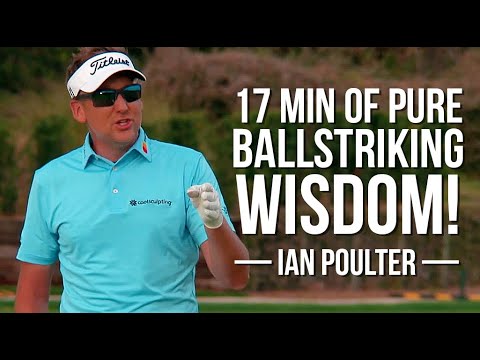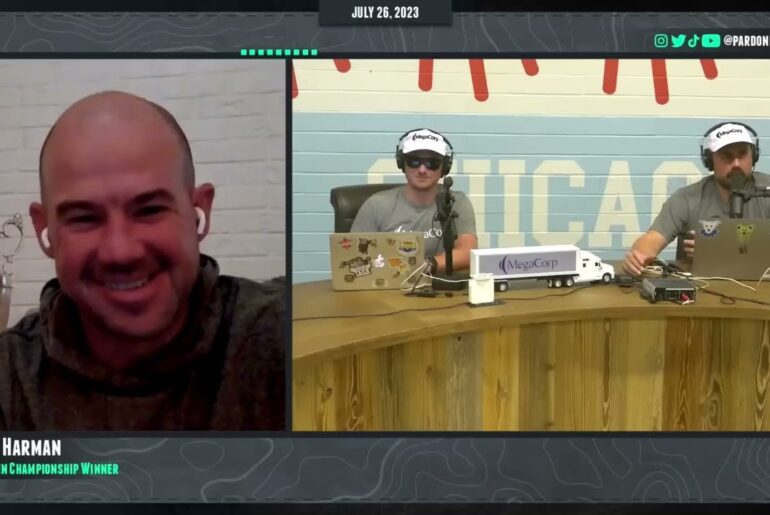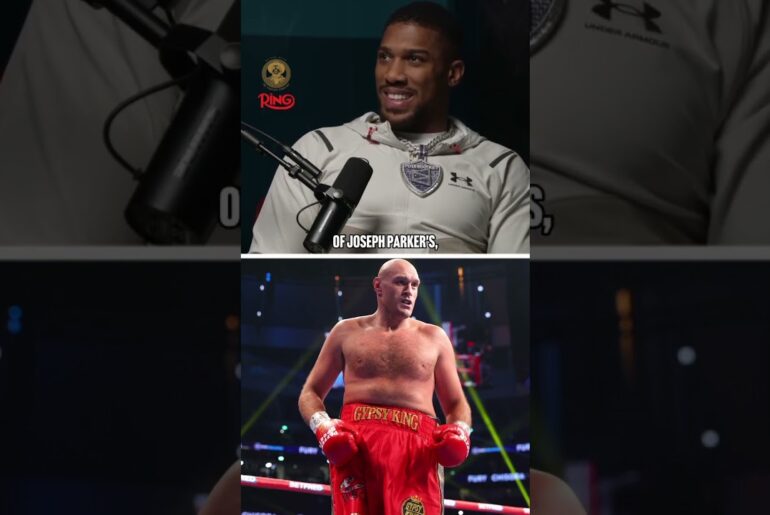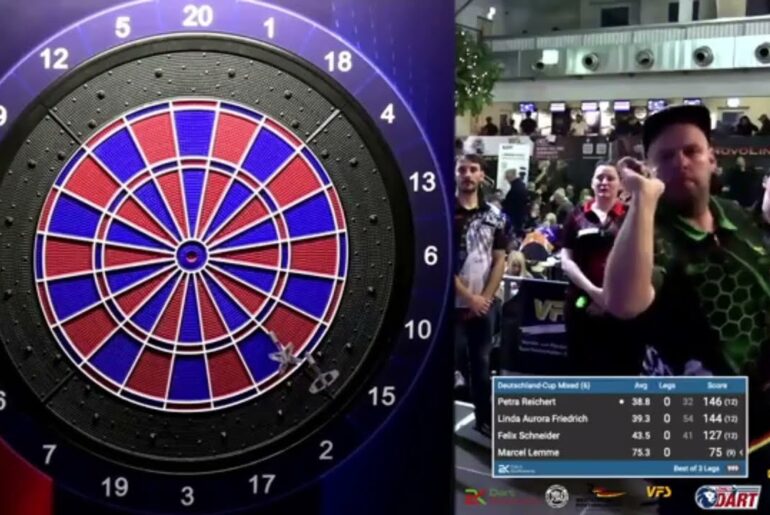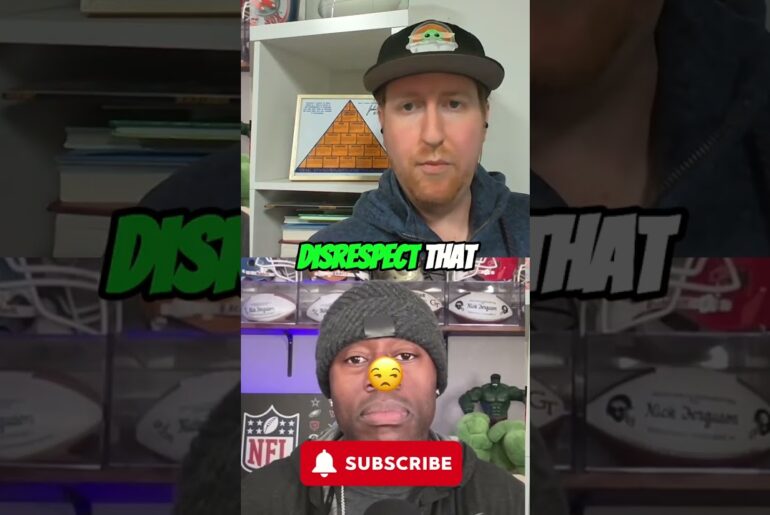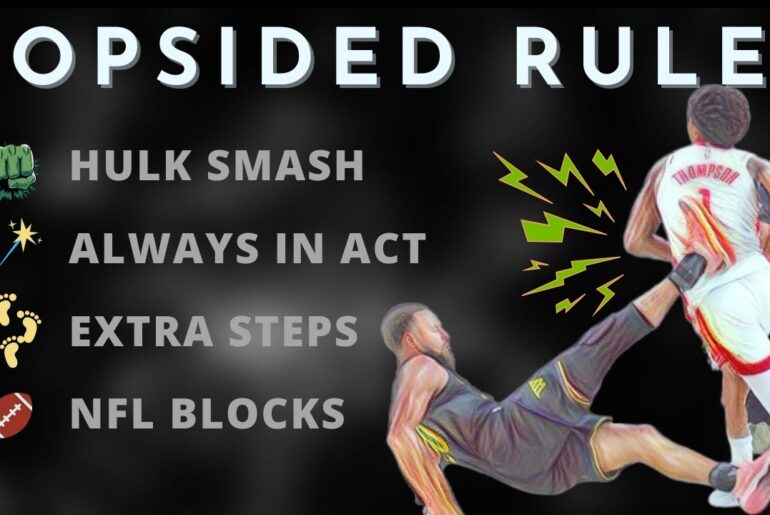Ian Poulter shares his thoughts on the swing, how to stay in control with a quicker tempo, why all golfers benefit from switching long irons to hybrids, and how to hit pressure shots with a driver off the tee.
Welcome to Golf Channel Academy. I’m your host, Brian Baitman, and today we’re at Lake Nona Golf and Country Club in beautiful Orlando, Florida. And I’m pleased to be joined by Ian Palter. Five RDER Cup teams, 16 wins around the world. This is your full swing special. Thanks for having us, buddy. Thank you. We’re going to run through your entire bag, wedges, mid irons, hybrid, all the way to the driver. So, let’s start right here with your wedge. You’re coming out on the range before the round trying to get loose. Walk us through what you do. Okay. So, um you can see on the ground already I have a uh I call it a T alignment uh stick. I’ve used one of these for a very long time. It’s something I feel uh you know most amateurs should use whether it’s a club or whether it’s one of those rods. But uh it’s helpful for me. So, if it’s helpful for me, I think it’ll be helpful for you as well. That’s a very simple tool to use. I’m starting off with a with a 60 degree lob wedge. This part of the game is one of the areas which I feel uh you know we all need to work on uh as much as possible. So my general feeling on this is uh my feet are shoulder width apart. You might be able to see my feet are perhaps set up just a little bit left of my target. I have lobb wedge in hand. Alignment with my shoulders is just left of the flag. And I want this landing just past the pin and it should have a couple of yards of check. Um, hit it to about six feet. So that that’s a very acceptable distance to hit it inside uh from 50 yards. Now obviously changing it up to different pins. If I laser Bushnell Pro X2, let’s check it out. If uh if I go for the second pin for instance that says 68 yards. So I want to try and calibrate for 68 yards. How am I going to do that? It’s generally speed. So let’s try and dial one into about 68 yards. Add a little more speed at the bottom. You know, you kind of want to be be hitting these wedges inside 8 to 10 feet, right? That’s our scoring zone. You want to make sure you’re giving yourself that tapping birdie opportunity. You know, working on this side of the game is the one area with the short game with the putt in that brings handicaps down. It’s the whole scoring premise about playing golf. Well, throughout your career here, you’ve played golf all over the world and tons of different conditions. Talk a little bit about flighting wedges. How would you flight this wedge down to still maximize your distance but still control the flight and hopefully control the number? Okay, so uh open championships are a prime example. We play on the coastline gets very very windy. Uh controlling your trajectory is something which is is very important. You don’t want to get the ball floating up in the air too much into a strong wind because you can get 10, 20, 25, 30 yards knocked off of a shot just by using the wrong type of a flight. So again, visualization is one thing. Visualizing the trajectory of the shot. I’ve got 56 degree. If I want to hit a knockdown shot, the simplest way of doing that is we’re going to grip down the shaft. We’re going to move the ball position slightly further back in the stance. You can see right there with my T position that is actually just slightly further back than center. Obviously, a descending blow into the uh the back of the ball. You’re going to take a big divot. That’s the fact of it. You can’t have your ball position move too far back without taking a divot. So, don’t be afraid of actually, you know, getting into the turf. and driving through the ball, maintaining the club face angle through impact. You can see I’ve taken a much bigger divot than those first couple, but you’ve actually hit the right trajectory. It’s gone through the wind. Hopefully, it’s gone the the desired number. Well, we’re just getting started going through your bag. We’re going to continue this trajectory talk. We’re going to talk about some mid irons, some hybrids. I can’t wait to hear your take on that. plus the driver. So when we come back, we’re going to continue this conversation more from Golf Channel Academy after this. Nice swing, Ian. Thank you. Welcome back. Your full swing special. Your only connection to the golf club is your grip. Very important part of fundamentals. Talk us through your grip. Okay, I’ll give you the basis on a how I hold it and b uh the type of grip I use because I try and even out the right and left hand. Obviously, there’s a taper uh in the grip itself uh which all of you guys will know is thicker at the top, it’s smaller at the bottom. So, how I start my taping, I like to regrip my irons myself at home. Um I start from 3 in down from the top. There’s no tape at all. I add one layer of tape from there down. I then start with another layer from 4 in from the top and go down. And then I go three layers over the top. So, three layers, four layers, five layers. Might sound like a lot of tape, but it just helps me feel more in control of the golf club. And in terms of the actual grip itself, I try and keep it very neutral. Um, if you look down, if you look down the top edge of the club, I can generally see two and a bit knuckles. I can generally see the logo uh on the left uh on the left part of my glove. And when I put my right hand on the club and set it down, the V that’s created in the right hand with the overlapping grip, not interlocking, but with the overlap generally comes up between my neck and my shoulder on the right hand side. So, you know, many would say that is a fairly a fairly neutral grip. Well, hit one. Show us. So left hand goes on, right hand goes on, little finger sits over the forefinger of the left hand. The Vsplit goes to just right of my of my neck. So your alignment tool there is not only for you can get a sense of where you’re trying to aim, but also ball position. Talk about the importance of ball position in your swing. I think the fundamentals of the game of golf, stance, ball position, alignment are really key to making sure and reiterating that you’re doing the right things. For me, um, is very, very helpful. It just ingrains everything you’re doing. It makes sure that you’re standing, you know, parallel to your target line. It also reiterates where your ball position needs to be in your stance. Now, even if you’re working on the game and you want to hit the ball high or low, again, you have that option. So, if I’m I’m going to hit a high shot and I want to move that ball position forward, I can see it’s further forward than normal. I’ve sent my ball position and my trajectory much higher than normal. So, obviously, it’s going to go a little shorter, but always going back to fundamentals. grip, posture, alignment, ball position are the basis of golf which I think people need to keep doing and going over and over and over again. And one more because I what I’ve always admired about your swing, Ian, is your balance. U quick tempo but balanced and I think that shows a lot of mechanical stability. Yeah, we’ve worked because of the balance that you worked hard on the legs. We’ve worked hard to to stop so much movement. You’re right. I have a quick tempo and it can get me out of sync sometimes. So, working hard on the basics of the game of golf for me fundamentals are obviously really key. So, we’re going to continue to go through Ian’s bag. We’re going to get to the hybrid and then to the driver and he’s going to show you how you can improve your ball striking. That’s next on Golf Channel Academy. Welcome back to Golf Channel Academy. Ian Poulter’s full swing special. We’ve made it all the way to the hybrid. And I think it’s interesting, Ian. We were talking earlier today. You said this is one of your favorite clubs in your bag. Explain. Well, uh, it replaces my three iron. So, I’ve got 21 degrees of loft on it. Uh, it’s a nice gap between my obviously my four iron and my 3-wood. You know, I feel that, you know, these clubs have obviously been very very popular. You know, not just from a from a tour players perspective, but even more so from an amateur golfer that likes his weekend golf. I love them. Let’s see one. This three hybrid carries 235 yards. So, my ball position with this will be just inside my left heel. Again, I’ve got a stance that’s just wider than my shoulders. Nice. Yeah, it still comes out pretty good. Any change in your mechanics when you go from, say, a four iron to the three hybrid? Not really. Um, I’ve tried not to really change my swing too much between those. Obviously, the ball position moves a little further forward. Um, my stance might be a little bit wider because the club’s actually just got a little bit longer, but I’m not trying to hit it up in the air. I’m actually trying to play it like it is an iron shot. And it’s just, you know, for me, it’s it’s very easy to hit. I like it. I like how it feels off the club face. I like that I can carry it a bit further than a normal three iron. That one there has carried 234.4 yards. So, you know, I know that’s in my window of 235 and it’s still spinning at 4,000 spin. So, even with that, it’s actually landing on the greens a lot softer than what a three iron would do. So, you know, I found these, you know, these hybrids very, very, very useful. And you speak of the versatility of the hybrids, the proams you play in, obviously it’s probably advantageous for a weekend golfer to utilize the technology of a hybrid because let’s face it, the old 2, three, four irons are not the easiest clubs to hit if you don’t get to play golf very often. No. I retired my two and three iron a long time ago and moved over to an easier club to hit. Why Why wouldn’t you Why wouldn’t you make the game a little easier? So, uh, any opportunity we get to make it easier, I I think we should take it. And if we’re taking it, you know, the viewers at home should definitely be taking every every opportunity to do so as well. Well, that’s a club that uh I think is underutilized and we’re seeing a trend now. More and more tour players using that club. When we come back, we’re going to take the head cover off. Ian Pter’s going to show us how to be more consistent and hit solid contact right here on Golf Channel Academy. Wow, that’s a good one. We’ve made it all the way through your bag. We started at the wedge. Now we’re with the big stick. A club that we all want to hit longer. We want to hit straighter. So, what is your go-to ball flight with a driver? Couple of yard draw. So, you like to hit the draw. That That’s the ultimate goal. So if I I know if I can actually get that club working slightly more from into out, therefore you even one degree into out with a two°ree up strike through through the ball, I’m going to get extra yards because I’m I’m a taking spin off the ball, b I’m getting a high launch, so I’m getting my optimum carry distances. So that’s one one of the things that I’ve been trying to do with driver. So you know technically uh the driver setup would be fairly wide stance ball opposite my left heel. I get into the top of my back swing position. From this position I actually want to drive a little from into out. Hit the ball on the up into my finish position creating that couple of yard draw. All right, let’s see it. There we go. Now that’s that’s hit pretty solid. Slightly from the inside. He’s got the right ball flight. It’s moving slightly right to left. Uh you know that all day for me it’s going to be in the fairway. So you’ve played in five RDER Cups. Obviously, I think the most pressure-p packed situation you can be in in golf. You’ve had to try to find that first fairway at the RDER Cup. With all that pressure, what is your go-to swing thought when you’re standing there on the first tee of the first day of the RDER Cup and you’ve got to find the fairway, squeeze a little cut down there. I mean, we’ve we’ve all been there. We’ve all been in the situation where we’re under pressure and you know, what can you do to get that ball in the fairway? Great question for me. Aim slightly left. Make sure you’re going to release that club head left and hold a tiny bit of loft on the face on the way through. Okay, it’s going to be a little shorter than where you want it, but it’s going to be in play. You know, trying to hit the big drive off the first te in the rider cup is not generally what you want to do. You want to put it in position. That’s a great piece of advice that when you have to find the fairway, go to a cut shot because to properly hit one like that, your chest has to keep moving, which under pressure is normally the first thing that stops. Well, everything tenses up um when you get under pressure. So, by aiming a little left, by allowing that club to keep going left, you know, you can open up the body on the way through, peel a little cut into play, get it in position. Don’t try and hit the big drive. I mean, rider cup is as big a pressure as it gets, and it’s some of the most fun I’ve ever had on any golf course at any time. Well, I noticed how you hover the driver behind the golf ball before you take it away. Yeah. Explain that thought process. Okay. I found by hovering the driver instead of actually setting the club on the ground, just by holding it off the ground, it freed me up on the way back slightly. There’s a lot of stuff happening on some of the drivers today, and it’s easy to get that club snagged on the ground on the way back. So, that was one of the reasons. The other reason that I did it was to actually add a little more club head speed. I found I picked up, you know, 1 m an hour difference by hovering. It definitely helped me flow a little bit from from the get- go. So, hovering definitely, it’s a win-win for me. I definitely feel like I can actually get the club away from the ball nice and easy, get a little bit more club head speed. One thing I’ve always admired about your golf swing, Ian, is the extension you have through the hit. There’s not a lot of hand action. You get full extension, a lot of right shoulder movement. Is that something that you’ve always done or is that something that you’ve worked towards? It’s not something that I’ve ever tried to work on. Um, I think, you know, it’s it’s a natural uh it’s a natural extension of of how hard, you know, you want to get that club working down the line. I don’t auto, you know, go to a, you know, a position of of extension. I just feel that it’s part of how I swing the golf club. That was a good one there. Yeah, that was pretty solid. Well, look, you’ve taken us from the wedge, through your irons, through the hybrids, through the driver. Thanks for having us. It’s been a pleasure. Thank you.

